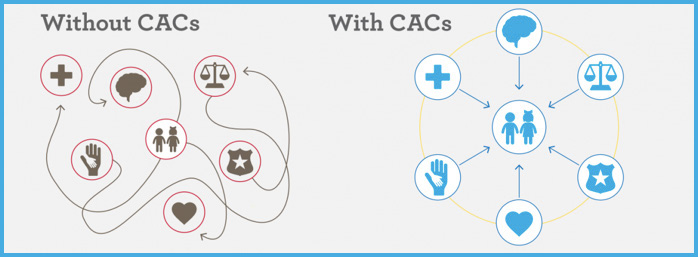How The CAC Model Works
Understanding Why Children Need Advocacy Centers
To understand what a Children’s Advocacy Center (CAC) is, you must understand what children face without one.
Without a CAC, the child may end up having to relive a difficult experience multiple time when being questioned by doctors, law enforcement, lawyers, therapists, investigators, judges, and others.
When police or child protective services believe a child is being abused, the child is brought to the CAC—a safe, child-focused environment—by a caregiver or other “safe” adult.
At the CAC, the child tells their story once to a trained interviewer who knows the right questions to ask in a way that does not re-traumatize the child. Then, a team that includes medical professionals, law enforcement, mental health, prosecution, child protective services, victim advocacy, and other professionals make decisions together about how to help the child based on the interview.
CAC’s offer therapy and medical exams, plus courtroom preparation, victim advocacy, case management, and other services. This is called the multidisciplinary team (MDT) response and is a core part of the work of CACs.

Graphic is credited to the National Children’s Alliance

